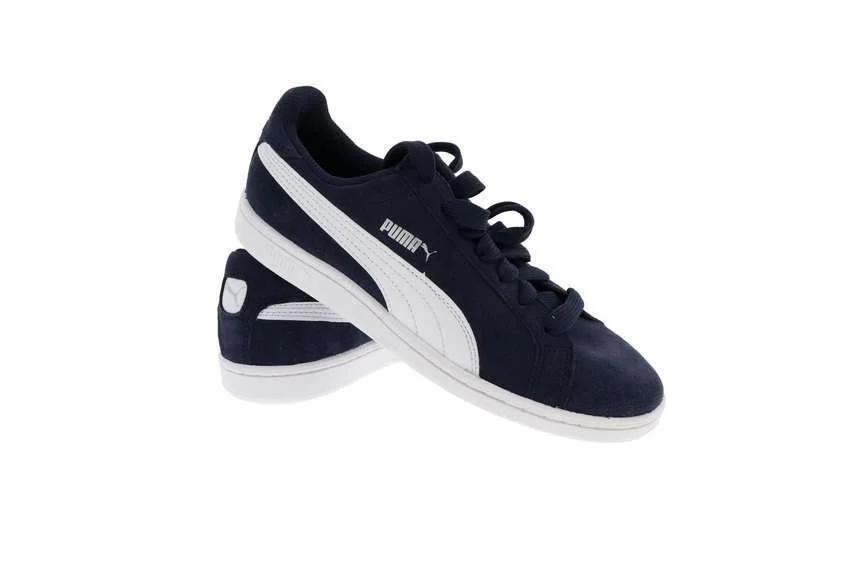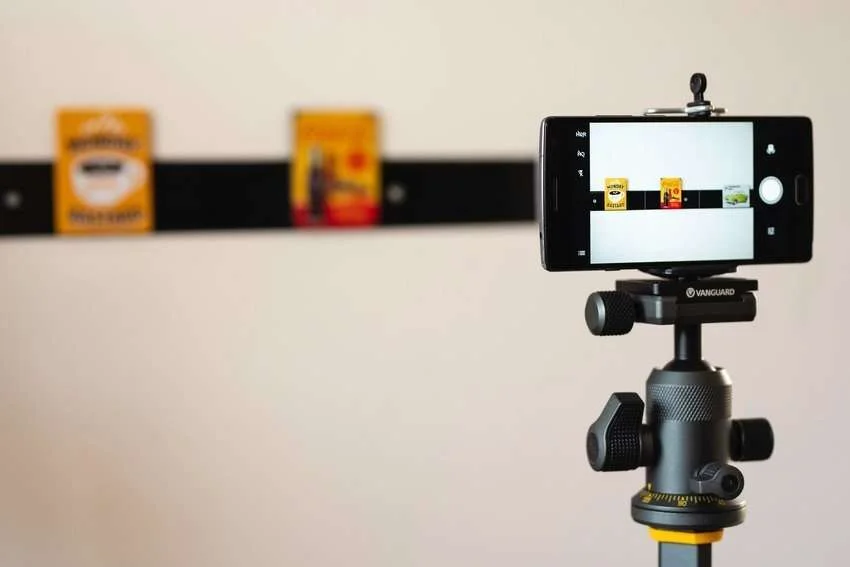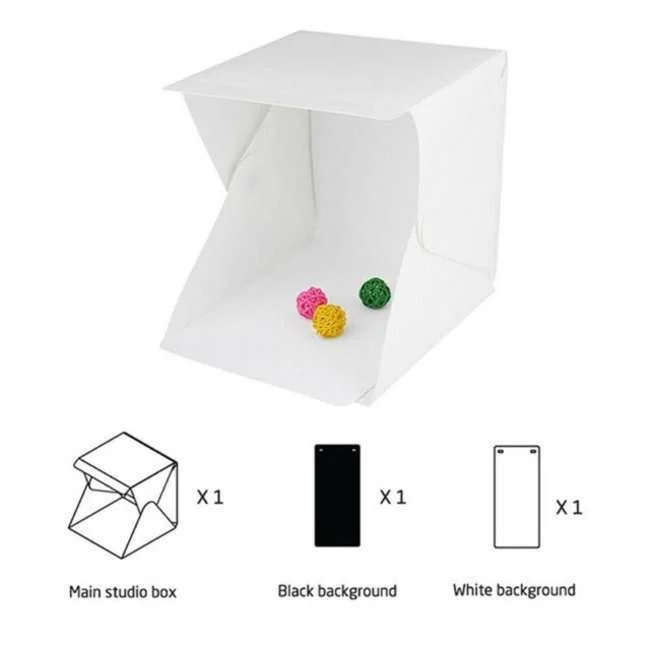Last Updated on January 23, 2022
Product Photography Equipment List for Beginners
Build Fast a Product Studio
Page Contents
You would already realize as a photographer that one of the fastest rising photography niches is actually a product photography niche. A growing range of e-commerce companies and offline goods companies market their products online and offline in various locations.

In order to produce massive banners and posts and advertise them for income, they also need an appealing picture of their product, which is only possible by highly professional product photography and premium quality product photo editing.
Product photography becomes more and more popular among photographers, and many photographers move or start a new niche career. But you must have the necessary equipment for product photography in this photography niche to begin your career.
Camera
Several camera options are available— from lightweight “point and shoot” cameras, mirrorless cameras, to DSLR and mobile cameras. We won’t go deep to find out the differences between them, your goal is to update your online store, and this is not the time for paralysis.
We will focus instead on DSLR and smartphones, as they are the two most common product photography options.
DSLRs for Product Photography
It is the kind of camera that you almost hired a professional product photographer with — the kind of camera with interchangeable lenses and many manual settings that makes them perfect for many conditions (including low light). The DSLR stands for “digital single-lens reflex.” Because a DSLR catches more light, the processing in which you can render more fixes ensures that you have a bigger margin of error.

You can shoot in several modes (including video mode for immersive 360-degree photos), turn lenses, take larger file sizes into account and coordinate with lighting installations if you’re planning on doing product photography for a while.
DSLR takes great photos once you get the hang of them. Fortunately, over time, the price points of these cameras dropped. Within a $400-$ 500 range, you will probably find a decent used model at half that price, Canon and Nikon— the two best DSLR brands — offer cheaper choices.
So if you’ve already invested in a DSLR–or if you have a friend who is prepared to lend you–make the most out of it and learn how to shoot!
Smartphones for Product Photography
We’d recommend that you check what you have like smartphones before buying a DSLR. After all, you may not be able to invest in a brand-new camera right now… and your camera may well be a great one. You may not get the full range you would have on your DSLR, but the image quality of the smartphone cameras indeed closes the gap. You will find the specs online for your phone.

They have fixed apertures, but, in comparison to DSLR, they offer autofocus, Tap-to-Focus, HDR, lighting options, exposure control, timer mode, optical image stabilization to minimize blur, all 12-megapixel lenses that are perfect for the photography in-studio. They are also available in the studio.
So take some time to know what can and can’t be achieved with your phone. Set it so that you can see the kind of pictures you can create with imaginative lighting and backgrounds, without filters, zooms, picture frames and flashes.
Filters won’t display you the product honestly, and the brightness of the picture will be diminished by zooming. In image post-processing, you can make any minor changes that you need.
Backdrop
You’ll have several background choices if you take lifestyle photographs, but here we are thinking about the studio setups. Most product images are taken against white backgrounds (those intended for product pages, anyway).
A white backdrop ensures that viewers just “see” the product, avoiding even the slightest distractions–like the line on which the table meets the wall. It guarantees an “as-is” presentation of the items.
Furthermore, white backgrounds show white light back to the object, which is vibrant and avoids the ”color spills.” It ensures the white balance of the camera is balanced correctly, which allows the portrayal of the colors more accurately.
It guarantees continuity between product images, which helps visitors to search more easily. Not to mention the white backgrounds are a must for comparison with Amazon or Google Shopping engines. But you will have to comply if you want to sell or be listed on these websites.
Tripod
If a smartphone or a DSLR is used, a tripod (or smartphone mount) is a great way to stabilize images. As we know, phone cameras come with software to stabilize photos, but if you hold the cameras by hand — particularly at slower shutter speeds— it will still be some shake (and tired arms!).

The tripods are often used to ensure that the camera is the same — at the same angle— and to make sure the pictures are accurate. And they free up your hands, of course, so that you can reposition your shooting tools in various directions.
Product Photography Lighting Kit
Light plays a significant role in every kind of photography. Light is known as the game-changer in photography. Light defines the product picture’s consistency and sharpness. So you need some essential product photography lighting kit to capture product images that will help you focus on the specifics of the photos.
A Lamp, SoftBox, lightbox, SoftBox, Lamp Dispenser, Reflector and Luminous Fill Light are the fundamental lighting devices you require. You can easily monitor the light that falls on the product when you take pictures of the product if you are able to handle such devices.
You can find that using natural light for product shots, as we will discuss in the next segment, is your best bet — perhaps because Studio lighting doesn’t suit your budget right now, or because you can literally do some incredible things with natural light. You can then find that you have certain weaknesses again.
You can shoot only at night, for example, or the light you work in is just too bright to take clear photos— even though you shoot multiple things for many hours or many years. For these cases, some of the illumination choices below are necessary:
Lightbox
A lightbox is a small box which contains inside a square case lighting. A lightbox or photographic tent is an additional feature, which usually uses a semi-straightforward material to disperse the light from various sources. This gives an absolutely dark and even measure of light to touch on a solid, clear backdrop.

It will allow you to photograph items at a minimal rate. If you don’t have a photo studio in, you can buy a lightbox or build one. You would have very little expense to buy a lightbox. When you take a picture under a lightbox, the image looks new and attractive. By doing so you are getting professional product images.
Umbrellas
You will need umbrellas regardless of the light you pick. Many different styles of shooting scenes, bounce sceneries and reflective metal umbrellas can be used. All-in-one umbrellas with a flexible brace to use for bouncing or diffusing lighting can also be found.

Shoot through umbrellas are the most commonly used, and some people believe that they are the most effective. Place these umbrellas over your light source to uniformly spread light and soften the intense shadows.
Bounce umbrellas are available in two varieties: black-white and reflective metal colors. Such parachutes appear to disperse light over a wider area, making it useful when you shoot something heavy. If you do not want to alter your Studio light color or use metal umbrellas to adjust the lighting colors as desired, choose a white, black back umbrella. Whenever you want.
Final Thoughts
In terms of selling the goods, perfect photography of goods is very important. You can sink the company if the photos of the product are not adequately convincing. Using the above equipment, you can perfectly photograph your items. So what are you waiting for, build your studio and go on like professionals for product photography?
With these four photography tools and equipment, you can start your photography business, but there are several other tools to help you organize items, change the light, or achieve different results. We will look at those resources the next time and how they can help you enhance the pictures of your company.
*Affiliate Links*
LEARN PRODUCT PHOTOGRAPHY – ONLINE CLASSES
Photography Classes from CreativeLive, KelbyOne, Udemy, and from the famous Product Photographers.
- The Ultimate Guide to Product Photography
- How to Retouch & Composite Product Photography
- Luxury Jewelry Photography
- Coffee Maker Product Photography
- How to Create a Series in Cosmetic Photography
- Product Photography With iPhone
- Jewelry photography for e-commerce
- Beer Product Photography
- Professional Jewelry Photography Bundle
- Learn Product Photography
- Watch Photography for Professionals